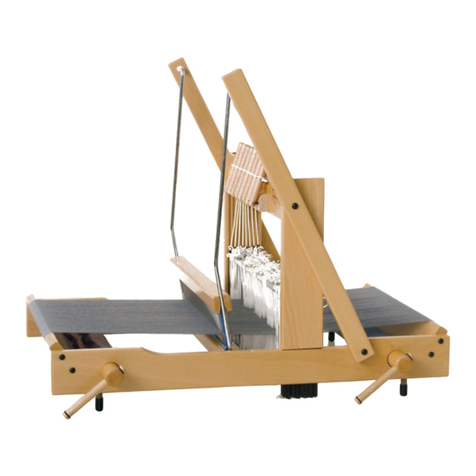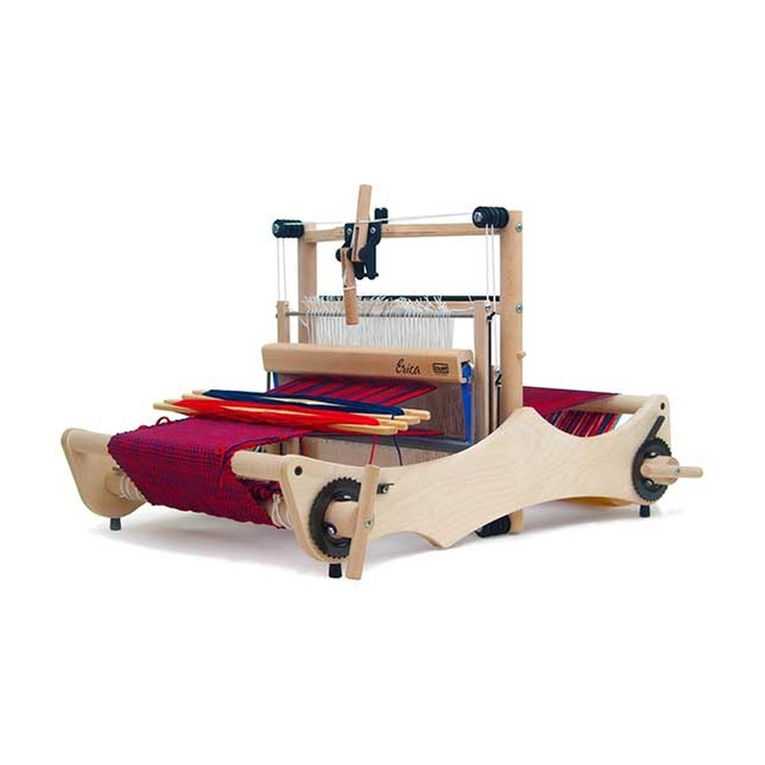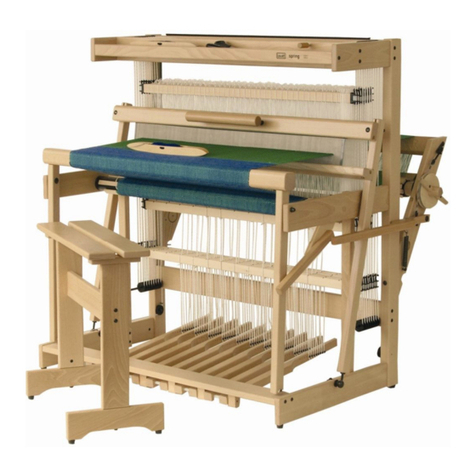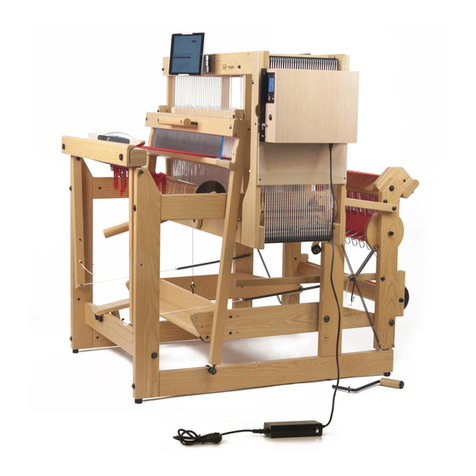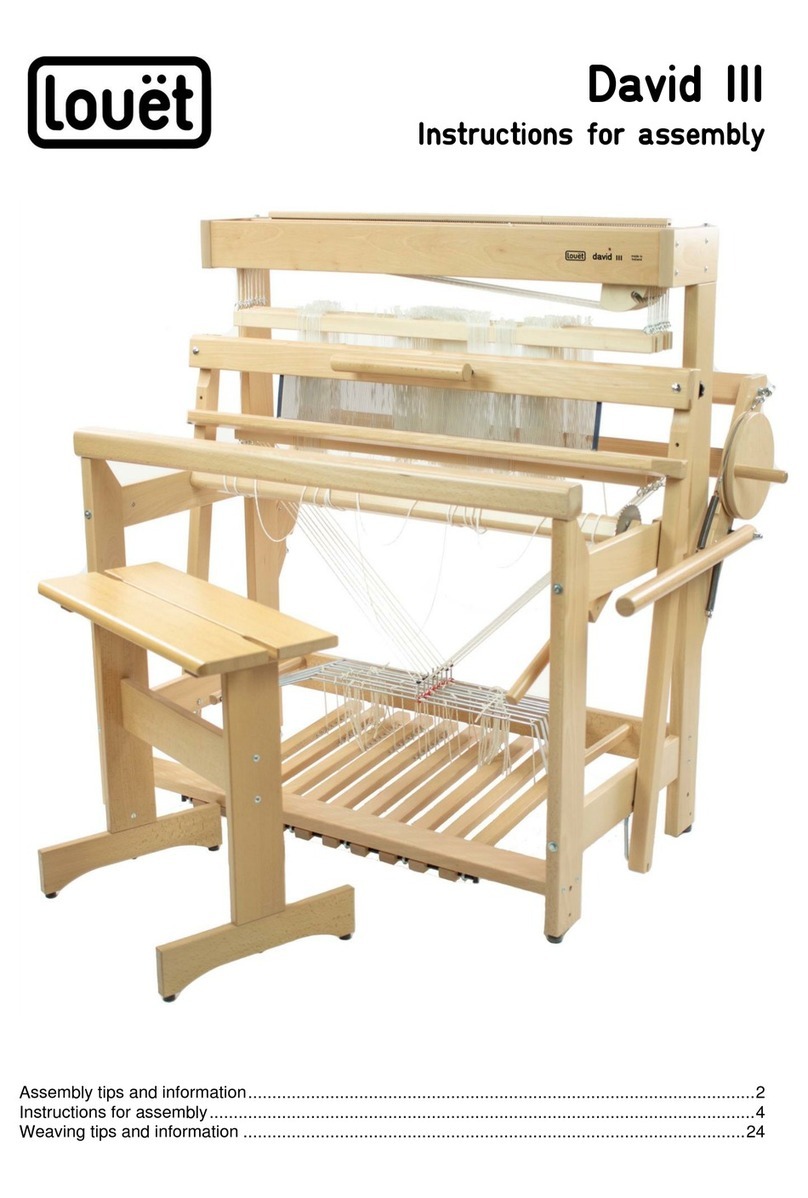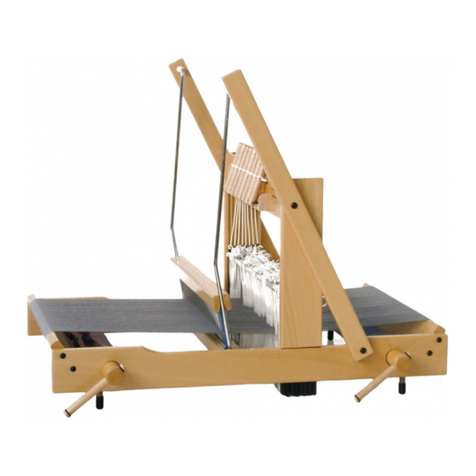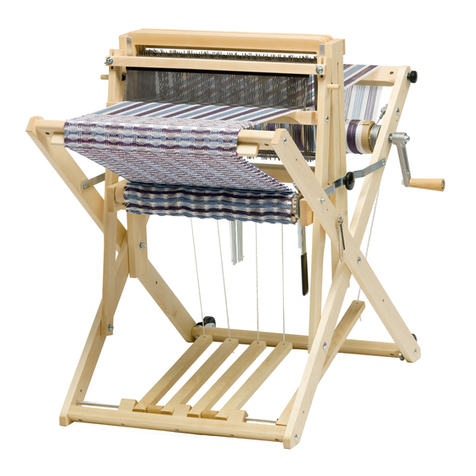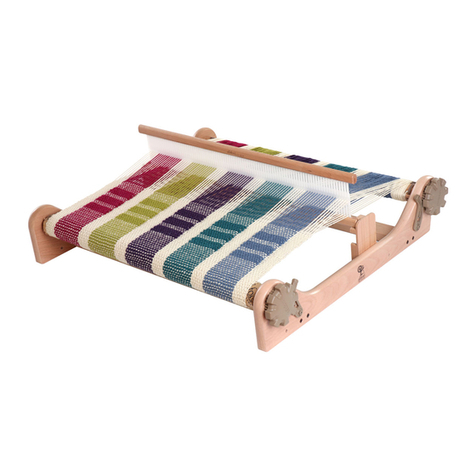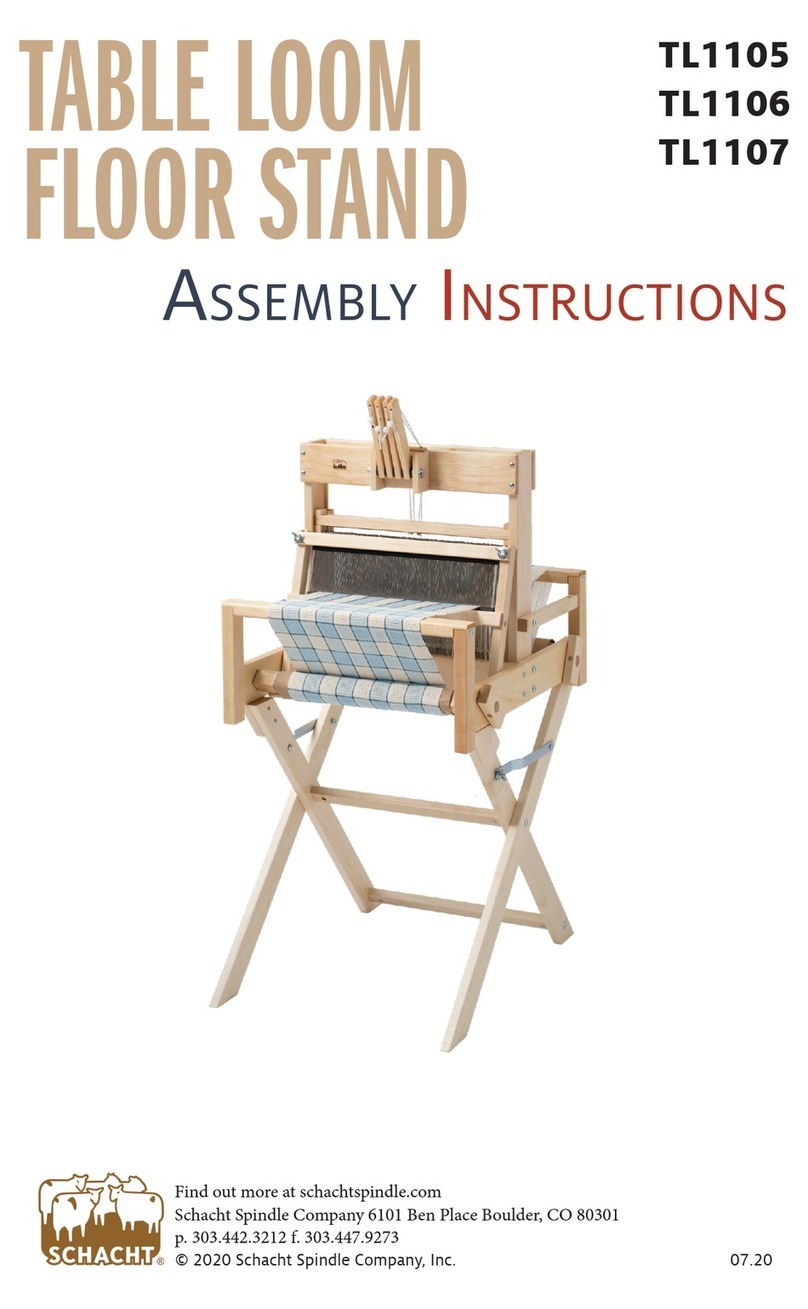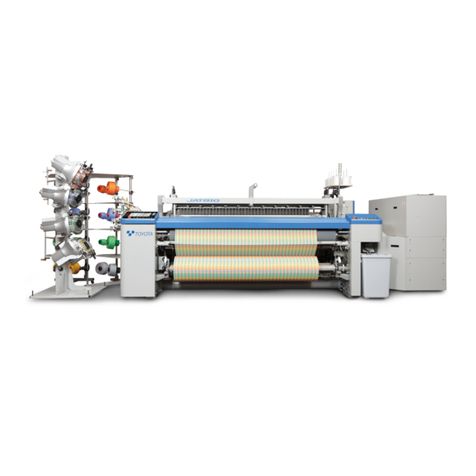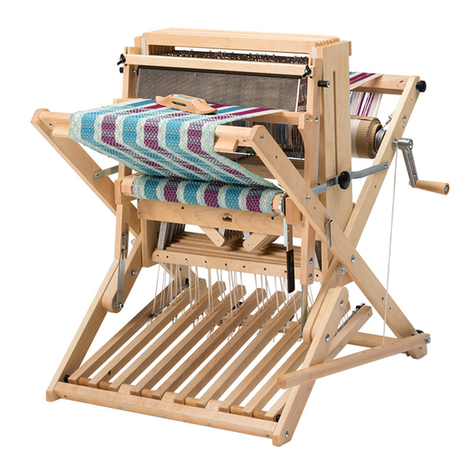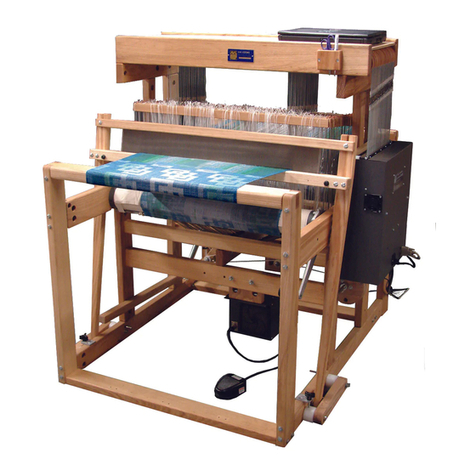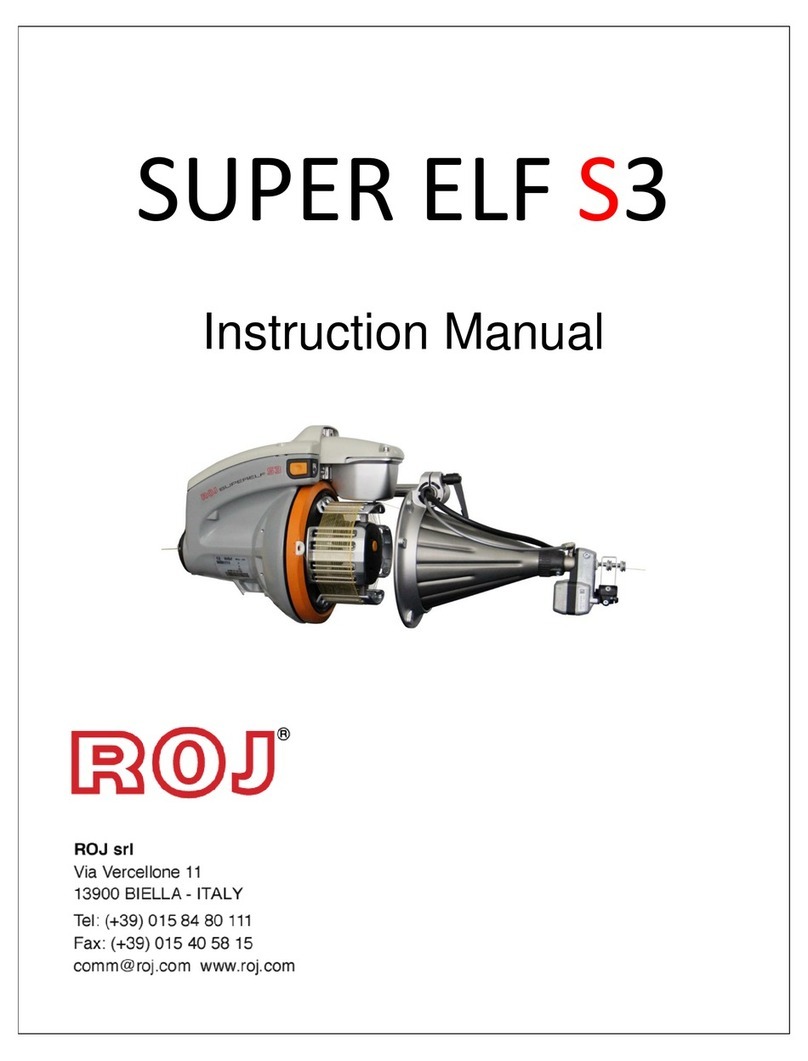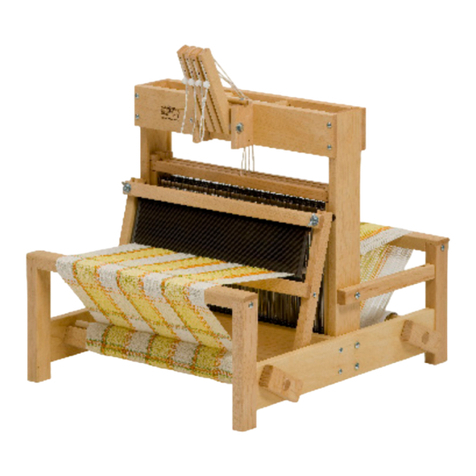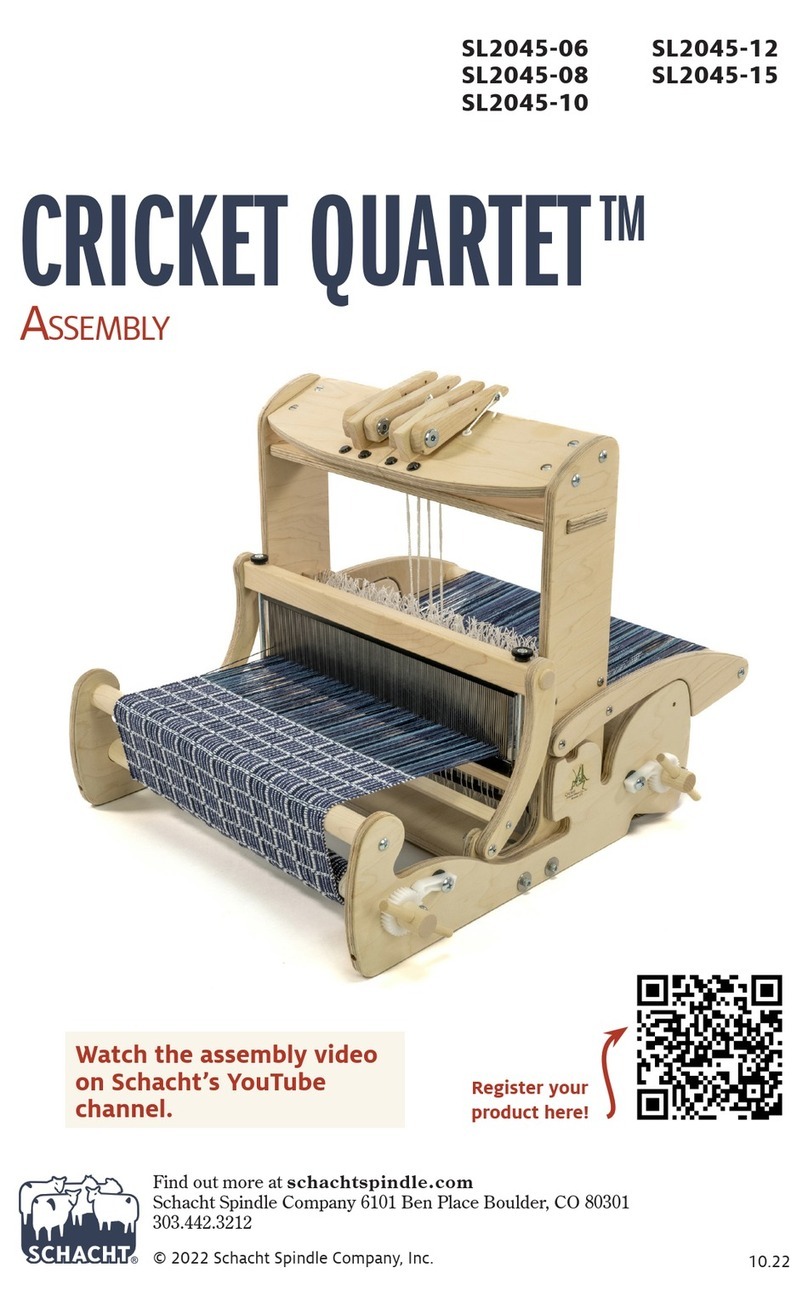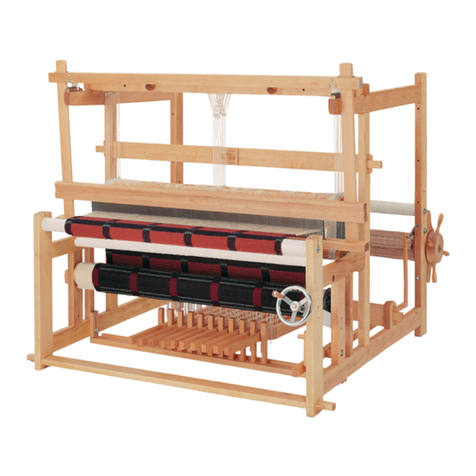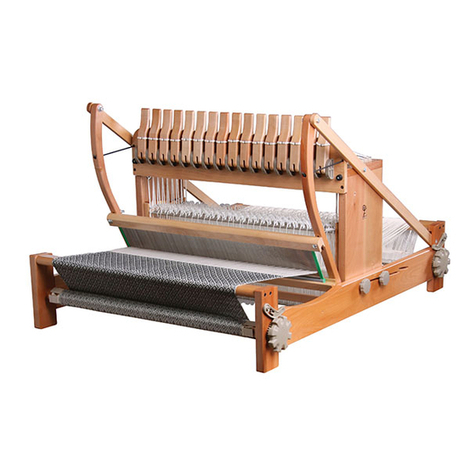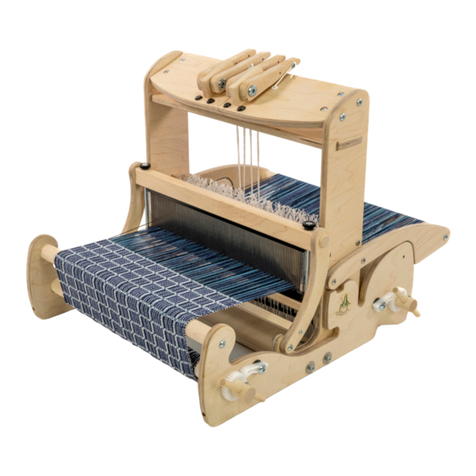2
daunting. Once the ties were made, there were
still problems as knots slipped or had to be
untied to adjust the cords. Fortunately this
drudgery is a thing of the past. The Texsolv
cords neither stretch nor require knots. The
Texsolv tie-up cords are attached to the lams
and can be simply hooked onto the treadles.
Changing the tie-up is easy and fast.
To improve the countermarch shed, to offer the
best shed a shaft action system can provide,
Louët invented an action system for another
part of the loom that holds the warp:
The moving breast beam, controlling the
warp tension
The moving breast beam allows the shafts to
move more easily in their opposite directions.
Looking at the diagram that shows the loom
from the side, you will see that a shed is giving
the warp a kind of parallelogram shape.
Imagine, the warp is made of inelastic material,
like metal wire, you will understand that making
a shed is only possible if the distance between
breast beam and back beam becomes smaller.
When this distance is fixed, as it is on other
looms, the shed depends completely on the
elasticity of the warp. When the shed becomes
wider, the tension on the yarns increases
(enormously, in case of a less elastic warp).
That causes heavy treadling and may damage
the warp.
The moving breast beam is held by springs,
adjustable to give your warp the tension needed
for your project. Besides improvement of the
shed and protection of the warp, the springs
guarantee exactly the same warp tension each
time you have to advance the fabric.
The Texsolv system
Texsolv cord and heddles are Swedish
products, crocheted out of polyester yarn.
Cotton heddles have the advantage of being
silent in use. Metal heddles, flat or wire, have
the advantage of having open eyes. Texsolv
heddles combine these features. A bundle of
Texsolv heddles is a continuous line of 100
heddles folded into a zigzag. Each bundle is
fastened in four places. These ties make it easy
to pass the shaft bars through the upper and
lower loop of the heddles. Do not remove the
ties from the bundles, until the heddles have
been slipped onto the shaft bars or the loops of
the bundles are inserted by sticks, to protect the
heddles from becoming entangled.
If you need to remove heddles from a shaft, first
tie them as they were originally. Use a pair of
sharp scissors to cut the heddles apart.
Texsolv cord consists of two cords, which are
connected every 12 mm, forming loops in
between. If needed, the cord should be cut
between two loops. To prevent unraveling, the
ends should be singed. Be careful not to overdo
the melting and be aware that melted polyester
is very hot and will burn the skin.
By mentioning the first or last loop in these
instructions, the loop is meant, next to the one
where the cord is cut, because when that loop
remains after cutting, it has no strength and
should not be used.
